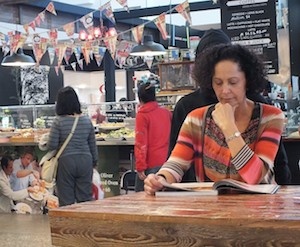1 in 10
NASDA Theatre, E Block, CPIT, Christchurch
07/10/2014 - 08/10/2014
Production Details
1 in 10
1 in 10 is an interpretive and personal account of crisis and the numerous levels of personal conflict; both mine and others.
1 in 10 can be perceived as positive or negative; as can all circumstances and episodes we are exposed to during our life.
1 in 10 is a statistical measure in an environment fraught with speed, anxiety and the desire to accomplish more.
1 in 10 is a study in human nature; the actions and reactions of both subject and audience. Crisis is often unforeseen and unpredictable but when it arises it is so often human nature to ignore or refuse to acknowledge it altogether. My crisis was cancer and with the negative connotations, imagery and fear attached to that word; I chose to ignore. Presented in dance, film and narrative.
Funded by Creative Communities and DANZ, with support of the DANZ Mentoring Programme.
Date/Time Tues 7th & Wed 8th October at 7.00pm
Cost $15, $10 concessions from Dash Tickets www.dashtickets.co.nz or ph 0800 327 484, booking fees apply.
50 mins
...in remission
Review by Erin Harrington 08th Oct 2014
1 in 10, led by dancer Karen Lewis, is a deeply personal work that deals with her battle with cancer of the head and throat. This piece of contemporary dance explores her personal journey from discovery and diagnosis, through to the horrific treatment process, and finally to remission, and it offers a portrait of the body as both a treacherous space and a resilient, creative force.
Karen is supported by a troupe of dancers (Serena Gallagher, Jo Symon, Anita Vaughan, Sarah Johnston, Tess Davison, Shannon Williams and Alisha Williams) who portray other patients (and other statistics), support people, the cancer treatment itself, and the will of the embodied individual to survive in the face of extraordinary pressure. The dancers aptly capture the simultaneous tedium, anxiety and violence of cancer treatment, as well as the way that the fear and horror of the patient often outstrips the capacity of their support person to comprehend what is going on. While some of the group work lacks precision, the performances are always dedicated and honest
Judicious use of lighting draws from the lights and lasers of the radiotherapy process to create a conceptual space that acts as the battleground between cancer, treatment and individual. There is also extensive use of projected video, which portrays Karen’s time in treatment at Christchurch Hospital. It’s wonderful that she was allowed to film within the hospital and incorporate members of the oncology staff, and these filmed pieces beautifully augment the performance by providing harsh context for the more expressive parts of the work.
This is a very brave and compassionate performance, and as a critic I find it very hard to critique a work that is so personal and sensitive, for the work and the practitioner are so tightly bound up that it is hard to separate one from the other. In saying this, it makes me feel like a total jerk to say that I didn’t connect with a good portion of the piece, despite having witnessed an immediate family member being treated for and then succumbing to cancer, perhaps because my tastes tend more towards the abstract and metaphorical. I find the personification of the cancer as deathly antagonist (portrayed by a dancer in a skeleton leotard) to be too bluntly representational for my tastes, and some portions, such as ‘The Road Trip’, which dramatises the regular trips to hospital, are too twee for me. Having done a bit of eavesdropping in the foyer afterwards I suspect that my conflicted reaction to the show is in the minority.
I respond best to three aspects of the show. The first is narrative: Karen narrates the discovery of her cancer and the preparation for treatment against an empty stage. The description of the treatment’s horrific side effects, which include facial burns, the loss of all Karen’s teeth and the insertion of a stomach peg so that she can eat, provide a juxtaposition between the absence and the presence of the body that I find quite compelling. The second is comic: a short film of group of (actual!) radiotherapists shoulder dancing to Lily Allen’s jaunty ‘Fuck You’ highlights the camaraderie between patient and clinician in the face of a common foe. The third, titled ‘Resolution’, is the finale. It is framed by shots of the forest rather than the clinical, sharp lines of the hospital, and Karen and her defeated cancer move together into remission. This gentle two-hander expresses the reclamation of the body from both illness and treatment and after the high energy drama of the invasive medical procedures its dignified sense of quiet is quite moving.
In the programme, Karen indicates that her intention here is to explore how trauma affects both the individual and those around them, to critique the way that we become blinkered and distant from one another, and to offer up her own experiences to others who may have dealt with (or may have to deal with) something comparable. She absolutely succeeds in her goals, and the honesty and bravery of this work is to be commended.
Copyright © in the review belongs to the reviewer






Comments